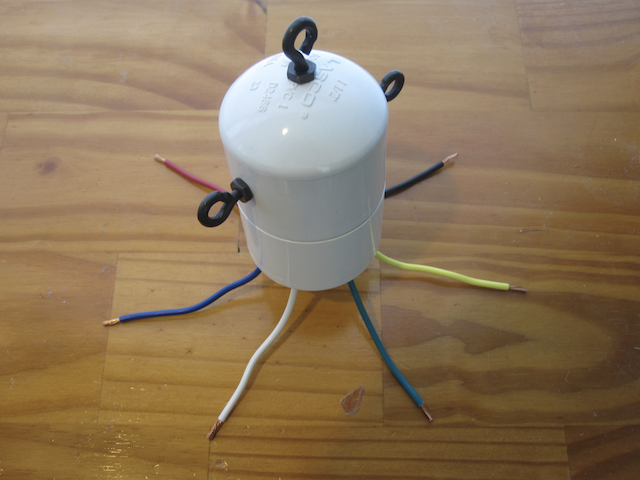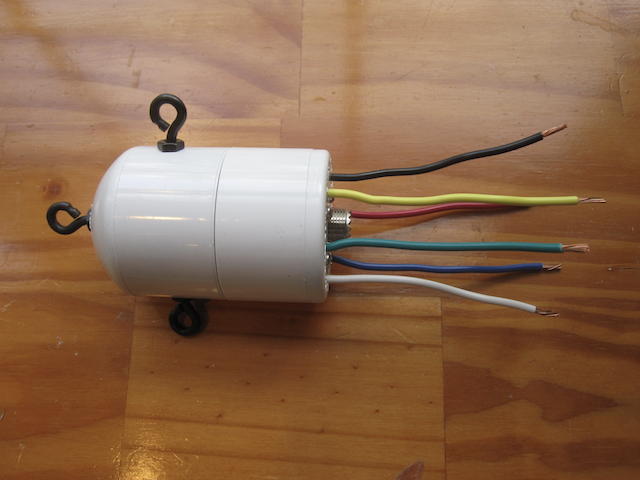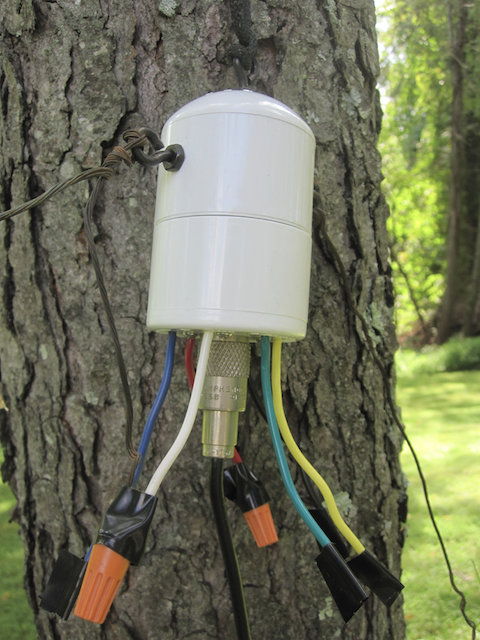Received in 22 days, along with a brochure about Radio Prague, and a small note pad. Submitted via website http://www.radio.cz/en/report



Received in 22 days, along with a brochure about Radio Prague, and a small note pad. Submitted via website http://www.radio.cz/en/report


I received this eQSL and email for the transmitter test I heard from Woofferton this morning on 9650 kHz, starting at 1237 UTC on 16 November 2017:

Hi Chris,
Thank you for your report and I confirm the details are correct. These transmissions were to fault-find on a 250/300 kW sender at the UK HF transmitter station at Woofferton.
These duration of these tests can be variable as the engineers can sometimes need a long time to establish a fault or they may interrupt the test, make an adjustment and resume. This is particularly so if the fault is of an intermittent nature.
Babcock, Woofferton is the only remaining UK HF sender broadcast station and also is the only one with this transmission test audio and email address.
The audio is contained in a file play-out system and incorporates non-copyright music and voice announcements from one of the engineers, Martin 2E1EKX at the transmitter site.
Thanks for your interest.
73
Dave G4OYX,
(Retired) Senior Transmitter Engineer Woofferton 1982-2012.

I built my own “universal” matching transformer for connecting dipoles, beverages, loop antennas, etc. to coax cable, rather than having to wind several transformers and test each to see which impedance ratio provided the best match. After some interest from others who wanted one, they’re now available for purchase.
Each contains a tapped transformer, providing many winding ratios, matching a range of impedances. Each tap on the transformer comes out via a color coded wire, making it easy to determine which pair to use. You can also just go through the various combinations, to find best pair to use. The output is a standard SO-239 socket, which you can directly plug coax with a PL-259 connector into. Or you can use an adapter if you have different coax, I tend to use RG-6. That’s a 75 ohm cable, but it’s fine to use here because I can still select a tap that matches the impedance.

For a dipole antenna, one wire goes to each leg of the dipole. For a loop, connect to the two wire ends. For a beverage, one wire to the antenna, the other to the ground rod. And so on. Note that the transformer is only designed for receiving applications, not transmitting.
The transformer has three isolated eyebolts. Two are used for the antenna connections to take the strain off the tap wires (don’t just directly connect to them) and the third to hang the transformer.
Unused taps should be covered with electrical tape, so the wire does not corrode.

More details as well as ordering information on The Squid page.
On Parr’s Ridge in northern Carroll County, MD.
Contest!
Guess The Amount of Snow At Casa De Smolinski
Seasonal Snowfall Contest Entries
16 Snowbrow 20.7 wadejg 23.9 dcasey 24.5 Squawks12 24.9 Bob919 29.2 SSB 30 Takoma 33.3 Merry Mildist 36.8 83worldtraveler 36.9 beadalou 38 ubimea 38.4 USAJerry 38.5 Evann21 40.8 Groveton 41.1 I Love MetMet 41.1 Rex Block 41.3 taylort2 41.7 PBH 43.6 gelezinis vilkas 44.4 SoCal SnowGal 44.4 Xtrain21 45.5 Rex Block 46.2 Terpiecat 47.325 Kate commenting 50 walter-in-fallschurch 51 huskerdont77 51.4 BigCountry 51.9 bachaney 52.2 eric654 52.4 gelezinis vilkas 54.7 parksndc 54.9 heroine.chic 55.2 chrisofthebeagles 55.9 heerokdas 62.2 TominMichiganParkDC (*) late entry, not reflected in the mean/median values 62.8 Lord Stark 63.1 WGsnowchic 66.0 --sg 65.0 CalypsoSummer 67.6 surewhynot 68.8 wwashington postt 81.3 hee hee
Mean: 45.68″
Median: 44.4″
November Total: 0.0″
Saturday December 9, 2017:
3.5″ snow.
Friday December 15, 2017:
0.75″ fluffy snow.
Sunday December 24, 2017:
0.25″ Snow and sleet.
Saturday December 30, 2017:
2.0″ very dry snow.
December Total: 6.50″
Thursday January 4, 2018:
0.9″ very dry snow.
Monday January 8, 2018:
0.25″ snow and sleet.
Saturday January 13, 2018:
0.25″ snow and graupel.

Tuesday January 16, 2018:
0.3″ snow.
Wednesday January 17, 2018:
2.0″ snow.
Tuesday January 30, 2018:
1.5″ snow.
January Total: 5.2″
Friday February 2, 2018:
Snow flurries.
Sunday February 4, 2018:
2.4″ of heavy wet snow, followed by rain and some freezing rain.
Wednesday February 7, 2018:
Sleet, freezing rain (0.1 inch) and rain.
Monday February 12, 2018:
Some sleet in the morning.
Saturday February 17, 2018:
2.0″ wet snow.
February Total: 4.4″
Friday March 2, 2018:
0.5″ wet snow, whipped by strong winds.
Monday March 12, 2018:
1.2″ snow.
Wednesday March 14, 2018:
Snow flurries.
Thursday March 15, 2018:
Snow flurries.
Friday March 16, 2018:
Snow flurries.
Tuesday March 21, 2018:
7.5″ snow.
Wednesday March 20, 2018:
8.3″ snow.
Sunday March 25, 2018:
Light snow flurries.
March Total: 17.5″
Monday April 2, 2018:
0.5″ of snow after 0.43″ of rain.
Monday April 9, 2018:
Snow flurries/showers, no accumulation.
Tuesday April 17, 2018:
Snow flurries, no accumulation.
Thursday April 19, 2018:
Rain and some sleet mixed in.
April Total: 0.5″
2017-2018 Season To Date Total: 34.1″
Previous seasons:
Winter 2016-2017
Winter 2015-2016
Winter 2014-2015
Winter 2013-2014
Winter 2009-2010: No details, but the seasonal total was about 100″ with three major blizzards.
Received in 46 days, along with a program schedule, small sticker, and 2017 laminated pocket calendar, for a report emailed to engl@rri.ro. This was the first reception report I sent out after starting to QSL SWBC stations again, after about 3 decades.


Received in 20 days for a report emailed to manager_thailand@tha.ibb.gov
I also sent a report directly to Radio Thailand, so it will be interesting to see if I get a QSL from them as well.


Received in 40 days for a report submitted online at http://www.wrmi.net/index.php/reception-report/


Received in 10 days for a report emailed to info@panambc.com along with a letter and program schedule.


I got a few ATTiny85 8 pin microcontroller ICs for a CW Beacon Keyer project I’m working on. You can write code in the Arduino environment for them, and you can program them using an Arduino as the ISP. This all sounded so easy… Famous last words.
I decided to use my Arduino Mega 2560, since that’s what I had available, the Arduino Uno was otherwise occupied. I did a quick websearch for instructions on programming using that Arduino, rather than the Uno, which is more often used. I ran across quite a few hits for people having problems getting it to work, which should have been my first clue that I was headed down the wrong path. The wiring is a bit different using the Mega, as far as which pins are used for ISP. And there were frequent mentions of needing a 47 uF cap on the reset line. Very dodgy.
I gave it a try, and of course it didn’t work. So I kept fiddling. You can make changes to the ISP sketch, to tell it to use the normal (Uno) pins for ISP. Tried, that, didn’t work. It was also a little unclear where to connect this magical 47 uF cap. I first though on the reset line of the Tiny85, which didn’t work. Then I realized no, it goes on the Arduino’s reset line, to stop it from going into reset mode prematurely. Still didn’t work. Spent much of an afternoon on it, without any luck. I read numerous posts about what worked for various people to ISP using a Mega, or what didn’t. I finally set aside for the day.
The next morning, I decided to try using the Arduino Uno. I connected up the ATTiny85, and it programmed the Blink sketch the first time I tried. Easy. Took all of 5 minutes. I wish I had tried the Uno first.
While it may indeed be possible to program an ATTiny using an Arduino Mega, I could not get it to work, and numerous other web pages related similar tales of woe from others.
This giant envelope arrived in the mail today! Yay, now I get added to some more watch lists bumped up a few notches on the watch lists I am already on:
Received in 27 days for a report emailed to englishradio@irib.ir

Inside was this QSL:

back:

And an 12 x 8 inch laminated embossed card, described as an amulet:

Text on the back:
